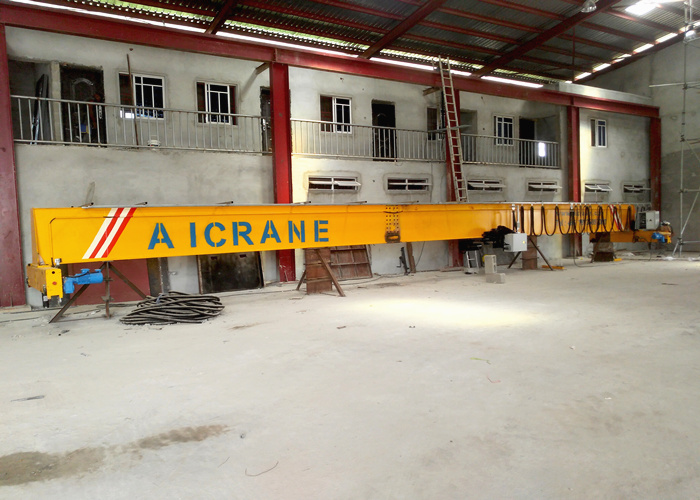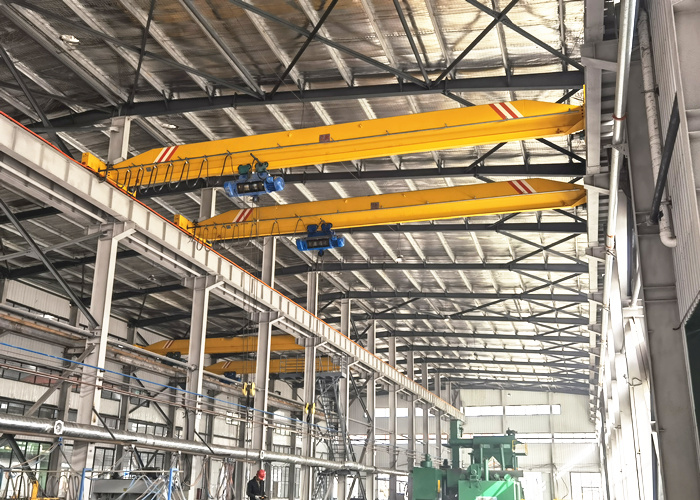The types of overhead cranes include Jib and bridge cranes. Let us explore these cranes to understand their main functions and how they are used. The parameters of warehousing are similar to those of transportation. Heavy and bulky products must be loaded into trucks, trains, and planes.
Overhead cranes are utilized to position these materials for transportation. In ship holdings, they position huge containers for overseas shipping. It takes a great deal of manpower to move such huge containers, so the overhead crane for Nigeria is essential.

Workstation Cranes
Workstation cranes are versatile and suitable for a variety of applications. They are also called bridge cranes, EOT cranes, and track-mounted cranes. They can be used for moving large loads and are especially useful in manufacturing and warehouse settings. Monorail cranes are a popular choice for transporting materials used in coating and painting, as well as in necropsy labs. Monorail cranes reduce labor costs and improve workflow by eliminating worker strain. The crane can be 5 ton, 10 ton, 50 ton and 100 ton, etc. 10 ton bridge crane is popular in the market.
Generally, these cranes are used in manufacturing or maintenance, where uptime and efficiency are paramount. The first electric overhead crane was designed in 1876 and used to hoist guns in the Royal Arsenal. Since then, the design has changed slightly. They are also used for car assembly lines and refinement operations. While the bridge crane has a long and impressive history, it has also become popular for a variety of purposes.
Electric Overhead Traveling Cranes
An overhead traveling crane can move large loads, such as a bridge, by moving on its own power, and is one of the most common types of crane. These are usually comprised of two parallel runways and a traveling bridge. They use electricity to lift and lower loads and are typically used in warehouses and other facilities where large amounts of cargo need to be transported. To learn more about these cranes, read on. But first, let’s clarify what they are.
Single-girder EOT cranes consist of a single-girder structure with a trolley and hoist running along its axis. They do not have rail components to move along a runway, and can be operated via radio remote control. Their long travel end carriage has four wheels. These are commonly used for lifting typical to medium-sized items. Single-girder EOT cranes are the most versatile type of overhead traveling crane. This crane can also be designed as European overhead crane.

Bridge Cranes
When a production facility needs to move large materials between floors, a Bridge crane may be the best option. A Bridge crane has many benefits, including higher capacity, faster cycle times, and less obstruction in the work area. These cranes can also be equipped with various options, including soft-start features, air-conditioned controls, radio remote controls, magnets, and boat stacking masts. However, they can be costly to install and require a specialized operator.
There are many parts to a Bridge crane, each with different technical characteristics. Inspection should be performed on each part, or at least every few weeks. During the inspection process, check for any cracks in the movable tiles or loose cushions, as well as any other irregularities. All parts should be reliable when opened, and any movement should be within 1.0mm. Also, the distance between the brake drum and axle pin should be even.
Jib Cranes
There are various types of jib cranes for different lifting applications. These cranes are easy to handle, offer great functionality, and are ideal for a variety of industries. They are also great for free standing applications, and save both human and material resources. They can reach up to 360 degrees, and come in a variety of different sizes and capacities. Listed below are some of the most common types.
When choosing a jib crane, consider its general purpose and the mounting options. For instance, you can choose wall-mounted jib cranes if you plan to use the equipment to support multiple workstations, bridge-mounted jib cranes a supplement to larger overhead cranes, or mast-mounted jib cranes based on your facility’s space and material handling needs. Depending on the type of jib crane you need, you may want to choose one that has a hand-geared or manual movement. There are also standard catalog jib cranes with capacities of 1/2 to five tons. You’ll also want to look for one with a hot-dipped galvanized finish. The reliable overhead crane exporters will provide you with many crane solutions.